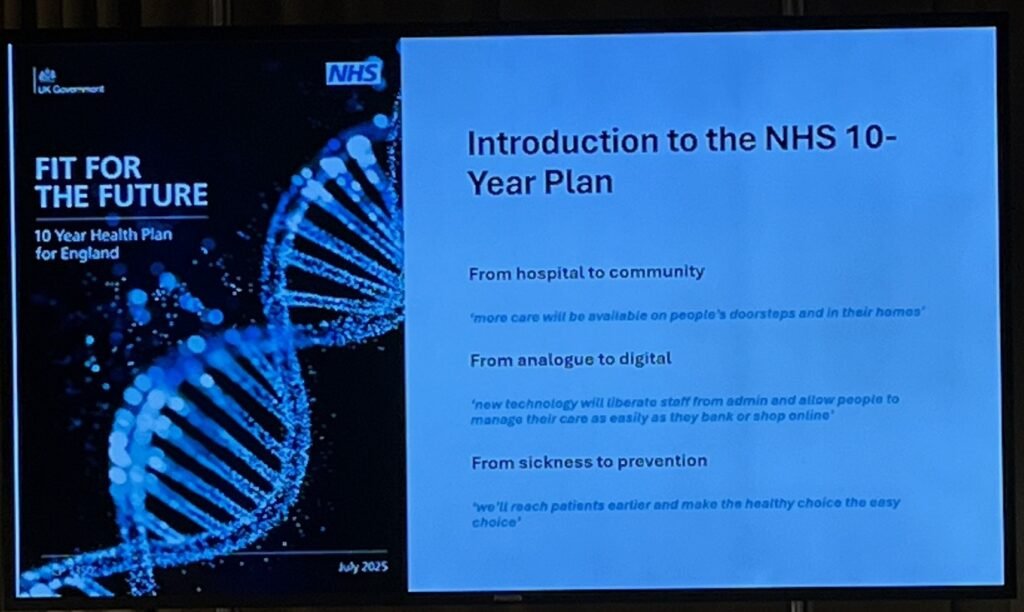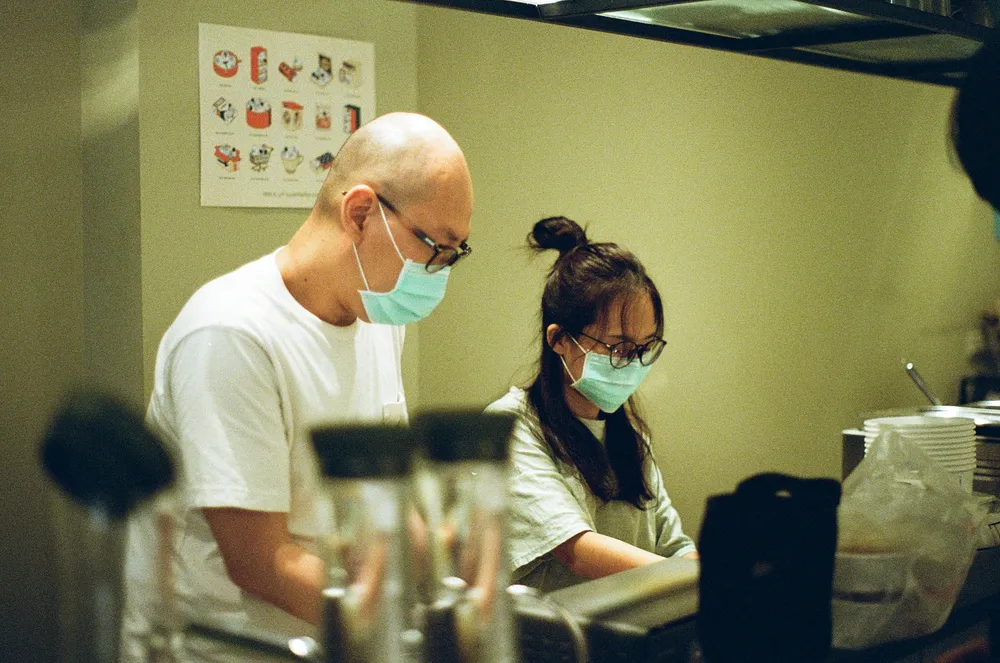The MedTech sector in 2025 is undergoing a profound transformation, driven by advancements in artificial intelligence, robotics, and a global shift towards more accessible and preventative care. This evolution is particularly evident in the growing UK-China MedTech collaboration. As illustrated in their respective healthcare reform agendas, the UK and China are undergoing transformative shifts that align strikingly in terms of vision and their pursuit of MedTech and healthcare system innovation—despite differences in system architecture.

Two Agendas, Similar Goals
Let’s take a quick look at the two reform agendas shaping future healthcare delivery in China and the UK. They’re remarkably aligned in direction, even if their healthcare systems and implementation pathways differ. The shared goals of the two blueprints offer fertile ground for deeper bilateral collaboration, particularly in areas like agentic AI, multilingual digital platforms, and lifestyle-based public health interventions.
The UK’s Fit for the Future: 10-Year Health Plan outlines three radical pivots designed to future-proof the NHS:
- Hospital to Community: Care is shifting from large hospitals to localised hubs. Neighbourhood Health Centres are emerging as frontline access points, delivering same-day GP consultations, urgent services, and integrated community care that blends clinical, pharmacy, and social support teams.
- Analogue to Digital: The NHS is investing in full digitisation—unifying health records via the NHS App, deploying AI-assisted diagnostics, and empowering patients with real-time oversight of their health plans.
- Sickness to Prevention: Focus is turning toward proactive health management through genomic screening, lifestyle medicine, personalised care budgets, and targeted public health education to address disparities.
Meanwhile, China’s Healthy China 2030 strategy is charting a similarly ambitious course, structured around four key pillars:
- Equitable Access: With a goal of achieving universal health coverage, China is reducing out-of-pocket costs and scaling rural access through expanded public health infrastructure and national insurance schemes.
- System Integration: The plan merges primary care, public health, and hospital services under a cohesive value-based framework. Regulatory reforms and quality standards are designed to streamline care and foster accountability.
- Innovation & Technology: Heavy investment in AI, genomics, and domestic MedTech production is accelerating the deployment of smart healthcare solutions and enabling faster clinical trial approvals.
Sustainability & Public Wellbeing: Environmental health is rising on the agenda—food safety, green infrastructure, and biodegradable healthcare products now form an integral part of national health planning.

Both China and the UK are reimagining healthcare — digitally, locally, and sustainably. Here’s how their agendas converge, despite vastly different systems.
🏛️ UK vs China: Strategic Healthcare Reform at a Glance
Aligning Systemic Vision in MedTech and Health Innovation
🔍 Focus Area | 🇬🇧 United Kingdom – Fit for the Future | 🇨🇳 China – Healthy China 2030 |
🏥 Care Decentralisation | Neighbourhood Health Centres deliver local care via integrated teams | Community Health Service Centres expand primary access with family doctors |
📲 Digital Infrastructure | AI-enabled diagnostics, NHS App, digitised records | National platforms, mobile consults, AI for triage and imaging |
🧬 Prevention-Led Strategy | Genomic screening, lifestyle medicine, targeted health interventions | Chronic disease targets, lifestyle campaigns, predictive analytics |
👥 Integrated Care Models | Multidisciplinary teams link clinical, pharmacy, and social services | Unified system across hospitals, public health, and primary clinics |
⚖️ Equity & Access Goals | Programmes to address regional disparities and vulnerable populations | Universal health coverage, lower out-of-pocket costs, rural expansion |
🤖 MedTech Acceleration | ILAP fast-tracks for innovation, wearables, robotic surgery systems | Domestic MedTech scaling, innovation approvals, AI drug development |
🌱 Sustainability Integration | Green procurement, biodegradable medical products | Climate-conscious policy, green hospitals, sustainable product design |
Together, these reform agendas reveal a strong convergence: both are decentralising care, embracing digital acceleration, and prioritising prevention. This creates fertile ground for deeper UK-China collaboration, such as bilateral pilots, joint ventures, and aligned innovation in diagnostics, therapeutics, and systems design.
Challenges abound, and a plan and reality are two different things. It remains to be seen, for instance, where the money to fund the reforms will come from in the case of the UK, or how Beijing tackles the issues of urban-rural and regional disparities while implementing the ambitious reform plans.

Transformation: MedTech Trends to Watch
MedTech is rapidly reshaping how healthcare is delivered. Several key trends are redefining the landscape.
First, instead of relying solely on hospitals, care is moving into local settings like ambulatory surgery centres (ASCs) and community clinics—especially in areas like orthopaedics and cardiology. This shift is powered by AI and robotics, which now make it possible to perform advanced procedures and monitor patients closer to home.
Secondly, AI is doing much more than diagnostics — it’s now streamlining the operation of healthcare systems. From speeding up data analysis to improving triage and workflow efficiency, AI is helping hospitals run smarter. While some developed markets still show scepticism, China is moving fast, embracing AI at scale across its healthcare landscape.
Thirdly, robotic surgery is changing the game, especially in orthopaedics and soft-tissue care. These systems are so precise and efficient that surgeons often stick with them long-term, creating strong brand loyalty. That means new players must offer full, integrated solutions to stay competitive in what’s now a mature and demanding market.
Fourthly, digital therapeutics are also on the rise. These software-based treatments, often paired with wearables and remote monitoring tools, are helping patients manage chronic conditions continuously. It’s a move towards more personalised, accessible care that puts control in the patient’s hands.
Finally, sustainability is now a business imperative, not a side note. Biodegradable implants, smart packaging, and energy-saving devices are in growing demand. Greener products aren’t just ethical—they’re fast becoming key to market success.

UK-China Collaboration: A Dynamic Partnership
The UK and China are finding strong common ground in healthcare innovation, with growing cross-border collaborations that warrant close attention. Both nations are investing heavily in predictive and preventive research—focusing on genomic screening, lifestyle medicine, and public health programmes that shift the narrative from treating illness to sustaining lifelong wellness.
One standout example is the CAMS Oxford Institute, China’s first overseas medical sciences hub, hosted by the University of Oxford in partnership with the Chinese Academy of Medical Sciences. This academic bridge nurtures joint PhDs, seed-funded projects, and shared labs, with a sharp research focus on immunology, cancer, and infectious diseases.
Commercial and tech ecosystems are also thriving. The HiMed Innovation Event, held during UK Tech Week at the London BioScience Innovation Centre, brought together leading biotech and MedTech voices from both nations. Precision medicine, AI in diagnostics, and startup incubation took centre stage—showcasing a vibrant, collaborative spirit.
In 2025, a landmark $5.3 billion agreement between AstraZeneca and CSPC Pharmaceuticals fused UK clinical expertise with China’s AI-powered drug discovery. Their focus on small molecule therapies for chronic conditions reveals a deepening strategic alignment in therapeutics.
Regulatory cooperation is also gaining traction. Shanghai Henlius Biotech’s Hansizhuang monoclonal antibody received an Innovation Passport through the UK’s ILAP framework—marking early market alignment and opening UK doors to Chinese-origin biologics.
From a commercial strategy perspective, Biorbyt, a Cambridge-based biotech firm, offers a smart entry model into China. By building strong distributor networks and navigating local regulations, they exemplify how trust-based partnerships and localised approaches underpin successful global expansion.At the clinical level, Medii, a London-based private hospital, is addressing gaps in UK healthcare by delivering culturally fluent, tech-enabled care—particularly for international and Chinese patients. With multilingual platforms and access to over 3,000 UK consultants, Medii supports patients facing linguistic or systemic barriers. Its concierge-style services and focus on lifestyle medicine highlight how personalised, confidence-restoring care can complement public systems in an increasingly globalised healthcare environment.

UK-China MedTech Synergies: Unlocking Opportunities
Despite inherent differences in their respective healthcare systems, the UK and China share common reform objectives that create powerful synergies for collaboration.
Primary Care Innovation
Both countries are decentralising healthcare by expanding local access points. The UK’s establishment of over 1,200 neighbourhood health centres and China’s Community Health Service Centres (CHSCs) with family doctor contracts present promising opportunities for joint pilots in remote diagnostics, triage technology, and integrated care models. Collaborations here could produce scalable templates for community-led care, especially in rural and ageing populations.
Digital Infrastructure & AI Deployment
The NHS’s billion-plus e-prescriptions and China’s scaling-up of AI-powered diagnostics, mobile consultations, and national digital health platforms signal readiness for cross-border partnerships in digital health. Cloud-based imaging, multilingual interfaces, and agentic AI are areas where shared development could result in more inclusive, interoperable systems, a future where digital solutions are jointly advanced and benefit diverse patient cohorts.
Preventive Healthcare & Lifestyle Medicine
With both nations shifting toward prevention-led models, there’s strong potential for joint initiatives in lifestyle medicine, behavioural analytics, and digital therapeutics. Co-development of tools for chronic disease management—grounded in genomic data and patient engagement—could set new standards for proactive care and health management.
Regulatory Alignment & MedTech Mobility
Collaborative pathways like the UK’s ILAP and China’s harmonised NMPA frameworks are already enabling faster entry for innovative therapies. Strengthening these bridges could lead to bi-directional market access for MedTech devices and biotech products, encouraging joint ventures and licensing agreements with global reach, and cultivating a more agile, innovation-friendly global health ecosystem, suggesting a future of streamlined international health innovation.
Cultural Fluency in Globalised Care
With rising international patient mobility, healthcare providers like Medii exemplify how culturally attuned services can fill gaps in care. UK-China partnerships in multilingual health platforms, concierge services, and wellness-driven interventions could elevate the patient experience for cross-border populations.
Together, these collaboration zones represent more than shared interests. By combining policy alignment with tech innovation and clinical depth, the UK and China have the opportunity to drive lasting impact across borders.

How Crayfish.io supports UK MedTech success in China and UK-China collaboration
Crayfish.io delivers strategic China market entry support for UK MedTech firms through tailored business solutions that span localisation, regulatory navigation, and go-to-market acceleration. We connect UK innovators with funding, sector experts, and trusted Chinese partners—fast-tracking commercial readiness.
With 24/7 access to multilingual eServices and a deep bench of industry specialists, Crayfish.io empowers MedTech companies to build local teams, protect IP, and thrive in China’s fast-evolving healthcare landscape. The result: smarter expansion, stronger partnerships, and sustainable success in one of the world’s most dynamic markets.
👉 Email us at Crayfish to book your one-hour complimentary consultation with us.
📚 Sources & References
- MedTech World. Top MedTech Trends to Watch in 2025.
- ZS Insights. MedTech Trends 2025 – AI, Robotics, and Site-of-Care Shifts. Accessed from:
- IQVIA. Ten MedTech Trends to Watch in 2025.
- Meril Life. Catalyzing Healthcare Through Innovation.
- Cambridge Network. Chinese Biopharma Out-Licensing Ushers New Era in UK-China Collaboration.
- Henlius Biotech. Henlius’ Hansizhuang Earns Innovation Passport via UK ILAP Framework.
- AstraZeneca. Collaboration with CSPC Pharmaceuticals Announced.
- UK Tech Week. HiMed Innovation Networking Event Summary.
